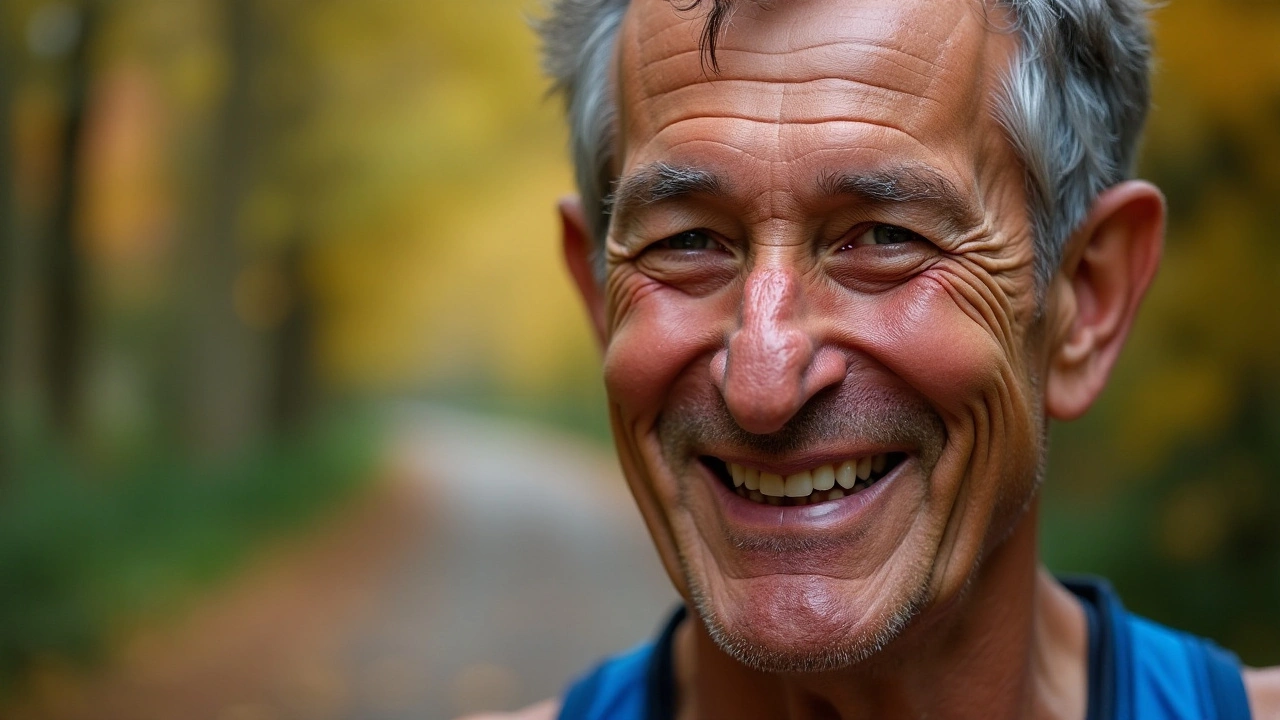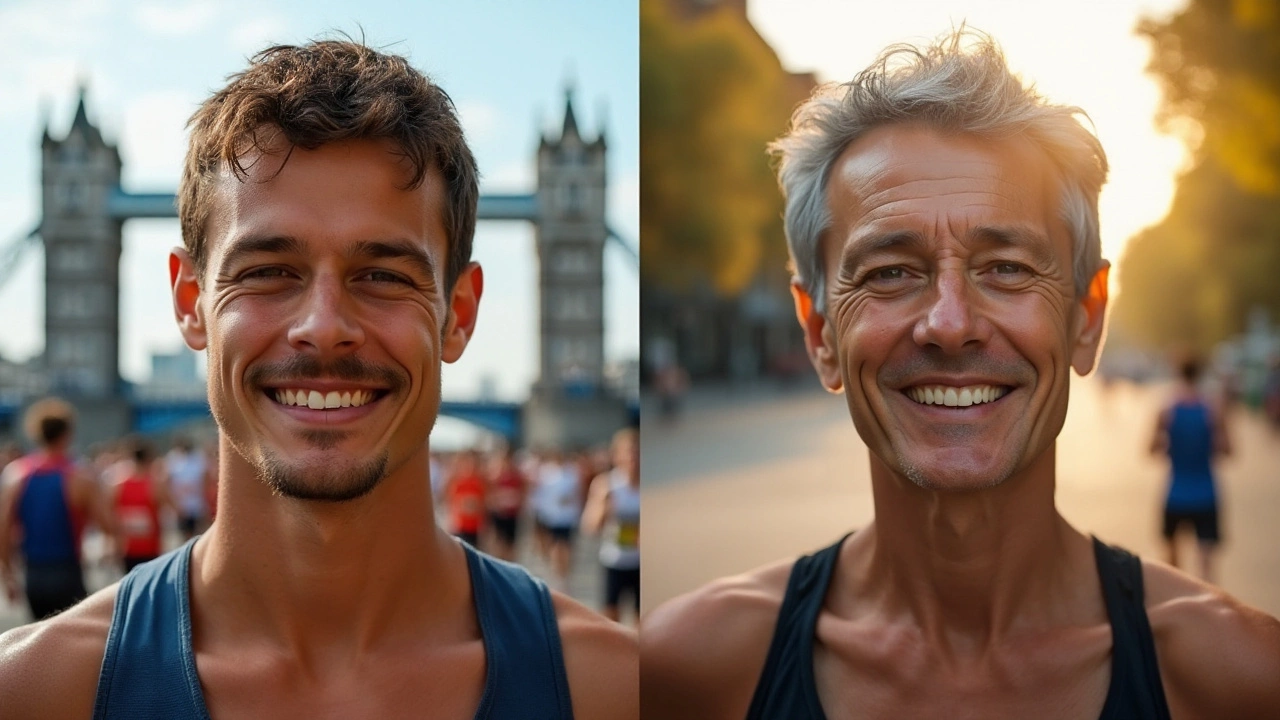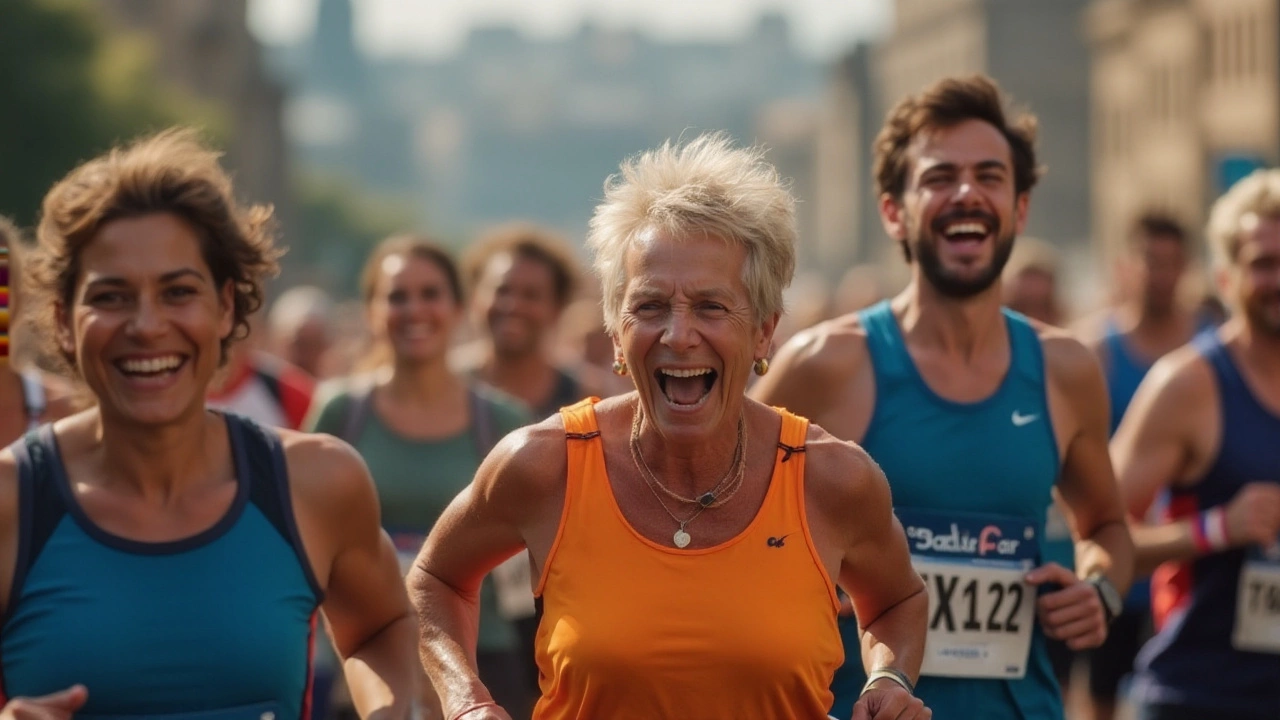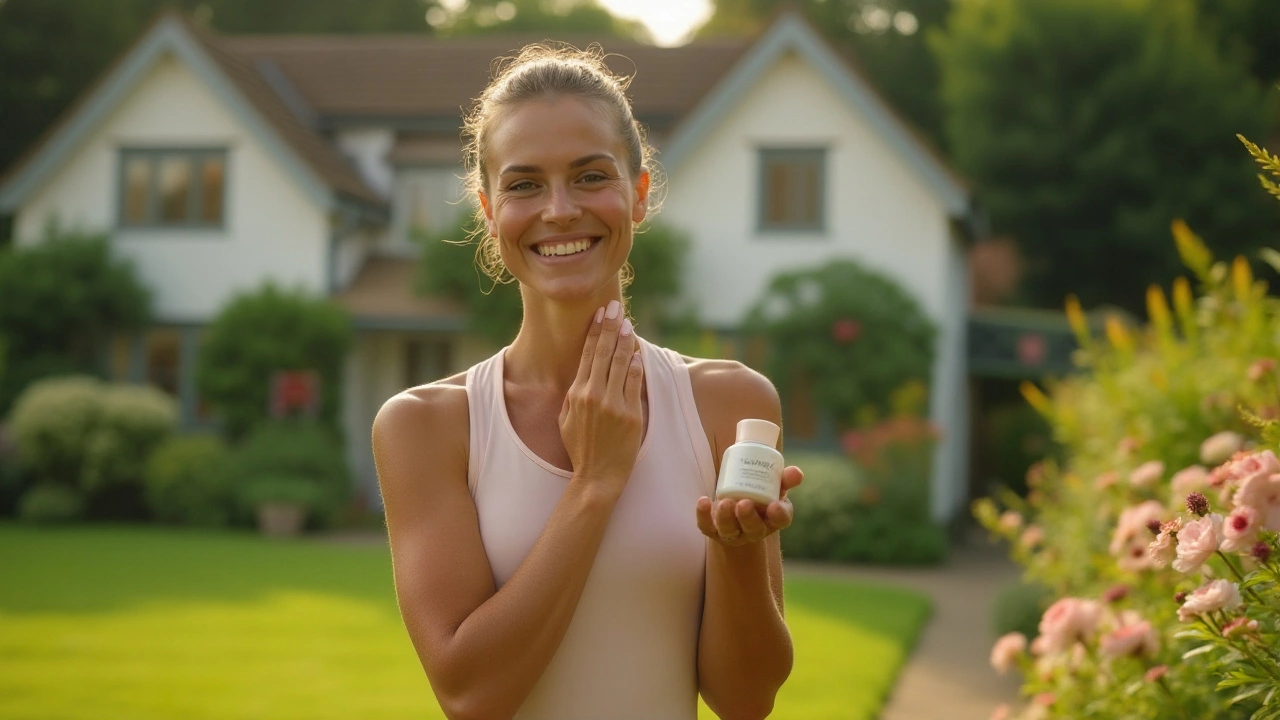Do Marathon Runners Really Age Faster? Unraveling the Myths

Marathon running has long been seen as a pinnacle of human endurance and commitment. Yet, a curious perception often accompanies this sport: the notion that these intense efforts might make runners look older. This idea, sometimes called 'runner's face,' has sparked more than a few conversations and concerns among athletes.
But does this theory hold water? Let's take a closer look at the science, debunk some myths, and explore practical tips for those who love pounding the pavement but also wish to preserve their youthful glow. At the junction of fitness and aging, marathon runners can find balance—and even thrive—while reaping the myriad benefits of the sport.
- Understanding the 'Runner's Face' Phenomenon
- Science Behind Aging and Endurance Running
- Tips for Runners to Maintain a Youthful Appearance
- Balancing the Benefits and Risks of Marathon Running
Understanding the 'Runner's Face' Phenomenon
The phenomenon known as 'Runner's Face' intrigues many within the fitness community, leaving runners and non-runners alike pondering its validity and implications. This term describes a condition where long-distance runners appear to have prematurely aged skin, often cited with sunken cheeks and deeper wrinkles. At the heart of this perception lies the extensive duration of time athletes spend outdoors, typically exposed to the elements, and sometimes a lack of subcutaneous fat due to low body fat levels. When running becomes as much a lifestyle as a hobby, these physical signs may, unfortunately, become more pronounced, raising questions about the balance between fitness and aesthetic concerns.
A core aspect often overlooked in discussions about marathon runners and aging is the broad impact of environmental factors such as UV radiation and wind exposure. These elements, unsurprisingly, can accelerate skin aging if proper protective measures, like sunscreen, are neglected. Such extrinsic aging processes often culminate in skin that loses its elasticity more rapidly. Hyaluronic acid from the epidermis diminishes too, leaving the skin less plump than it was in the runner's youthful years.
"A lot of skin damage accumulates over time which is why protective measures are crucial," says Dr. Samantha Myers, a renowned dermatologist often cited in studies related to athletic skincare.
While lifestyle choices play a significant role, the biological and mechanical impacts of marathon running should not be underestimated. Every repetitive impact from footfalls during a run sends vibrations through the entire body. This mechanical stress is mild yet persistent, sometimes thought to play a part in breaking down the collagen structure supporting facial tissues. However, it's vital to note many experts argue this effect is likely overshadowed by other factors, including genetics and overall skincare routines.
Some simplistic myths about the aging look in runners claim that exercise, specifically endurance running, accelerates the breakdown of muscle tissue. However, such claims often ignore crucial benefits of endurance training, like improved cardiovascular health and enhanced metabolic rates, which can outweigh superficial aesthetic concerns. Runners can certainly maintain vitality and youthful vigor by supplementing their rigorous routines with adequate nutrition, hydration, and recovery practices.
Prevention and Mitigation
Achieving a balance between reaching marathoning goals and caring for one's appearance is attainable. Integrating protective skincare practices such as using high SPF sunscreens, wearing hats, and hydrating diligently can mitigate exposure impact. Increasing collective awareness about runner-friendly skincare might encourage disciplined approaches beneficial for aging prevention. This proactive strategy can participate significantly in the fight against the misconception that marathon runners inevitably look older.
To sum it up, understanding the nuances behind 'Runner's Face' involves a multifaceted exploration of both intrinsic and environmental factors. By delving deeper into the realities, runners can learn to blend performance with aesthetics, challenging presumptions about the inevitability of aged appearances in the field of long-distance running.

Science Behind Aging and Endurance Running
Endurance running, especially at a marathon level, places unique demands on the body. It compels the heart, lungs, and muscles to work harmoniously, pushing physical boundaries. The toll of such exertion naturally raises questions about its impact on aging. Skeptics suggest that long hours in the sun, dehydration during runs, and the immense pressure on the body might lead marathon runners to appear older than their peers. However, the link between aging and intensive training is more nuanced. Melting away calories, marathon runners often experience lower body fat, which could translate to less fullness in the skin. This is commonly believed to contribute to what some describe as the 'runner's face', where skin may appear more gaunt or lined.
A pivotal study by Tel Aviv University found that intense physical activities might trigger the release of free radicals, which are known to accelerate aging. Yet, the same study points out that such activities also stimulate the production of antioxidants, which are vital in combating these radicals. This dynamic process underlines the complexity: the body is both challenged and fortified through exercise. Some scientists argue that the net result of sustained running is enhanced longevity and health, with any facial impact being a superficial consideration. As Dr. Emily Farber of the American College of Sports Medicine notes, "The physiological benefits of running, such as improved heart health and reduced risk of chronic diseases, typically outweigh superficial aging signs."
Moreover, the genetics and lifestyle factors tend to play more significant roles in the aging process compared to running alone. Nutrition, skincare, and environmental exposure all factor into how a runner might age. Engaging in proper skincare routines and following a balanced diet that includes plenty of antioxidants can counterbalance many potential downsides. Studies from the Mayo Clinic also highlight that regular, moderate physical activity can actually stabilize telomeres, the protective caps on chromosomes, which otherwise shorten with age, suggesting that exercise might actually delay cellular aging. This insight hints at the deeper levels at which running interacts with aging processes.
| Activity Level | Telomere Length | Aging Impact |
|---|---|---|
| Marathon Running | Stabilized | Delayed Aging |
| Sedentary | Shortened | Accelerated Aging |
It's crucial to remember the psychological upshot of running as well. A meta-analysis of health studies demonstrated that those who ran regularly—regardless of pace or distance—often reported better mental health and reduced symptoms of anxiety and depression. When considering the well-being and youthfulness of a person, mental health is a significant element that often keeps both perception and reality intertwined. Enjoyed wisely, the benefits marathon running offers surpass the concerns about accelerated aging. It's a balancing act of training responsibly and nurturing one's body with care that ultimately preserves both wellness and a radiant appearance.

Tips for Runners to Maintain a Youthful Appearance
Running marathons is an exhilarating pursuit, but preserving one's youthful looks amid the rigors of training requires mindfulness and strategy. First and foremost, hydration is key. The pounding of feet against pavement can lead to dehydration, exaggerating fine lines and creating a tired look. Drinking plenty of water before, during, and after runs can keep your skin plump and resilient, effectively defying dryness which contributes to signs of aging. A study found that individuals who stayed properly hydrated had skin that appeared more youthful, reinforcing the importance of maintaining proper fluid balance.
Along with hydration, protecting your skin from the sun is paramount. Marathon training often involves long hours under the sun, which can accelerate aging due to exposure to UV rays. Consistent use of a broad-spectrum sunscreen with at least SPF 30 can help fend off these effects. Applying sunscreen liberally to your face and other exposed body parts—even on overcast days—ensures you’re shielded from harmful rays. Elizabeth Hale, a dermatologist, once remarked, "Daily use of sunscreen is the single most effective way to protect yourself from skin aging."
"Daily use of sunscreen is the single most effective way to protect yourself from skin aging." — Elizabeth Hale, Dermatologist
Nourishment also plays a crucial role. A balanced diet rich in antioxidants is another line of defense against premature aging. Foods filled with vitamins C and E, such as citrus fruits, nuts, and leafy greens, can naturally boost your skin's elasticity and promote collagen production. These nutrients act as a barrier against the oxidative stress caused by potent training sessions. Supplements like omega-3 fatty acids have also been shown to support skin health from the inside, providing that sought-after glow.
It's equally important for runners to focus on strength training. Building muscle mass can help maintain facial volume, which often diminishes as one ages, leading to a gaunt appearance sometimes likened to 'runner's face'. Incorporating resistance exercises into your regimen not only helps in reducing injury risk but also contributes to maintaining a youthful structure overall. Adopting a balanced approach combining cardio with weights can facilitate improved skin tone and firmness.
Lastly, do not underestimate the power of restful sleep and recovery. Adequate sleep is a cornerstone of any anti-aging strategy. During deep sleep phases, the body repairs damaged cells and revitalizes skin, helping dim the visible signs of stress and exertion. Creating an optimal sleep environment with comfortable bedding, reduced blue light exposure from screens, and a regular bedtime routine can amplify these regenerative processes. Be mindful of prioritizing rest days within your training schedule to allow both your body and skin time to recover.

Balancing the Benefits and Risks of Marathon Running
Running a marathon isn't just about crossing the finish line; it encapsulates a journey of transformation, discipline, and self-discovery. Yet, the prolonged strain it imposes on the body can be both rewarding and risky. Understanding this equilibrium requires evaluating rigorous training benefits juxtaposed against potential drawbacks. On the positive side, marathon runners often boast an impressive cardiovascular profile. Regular long-distance running enhances heart health by increasing cardiac output and lowering blood pressure, crucial elements for longevity. Beyond the physiological, the mental clarity and stress reduction associated with running should not be underestimated. Many find that long runs act as moving meditations, helping to untangle complex thoughts and fostering a profound sense of wellbeing.
However, the rigors of marathon training can also introduce challenges. Constant pounding on pavements may lead to joint wear and tear, often raising concerns about osteoarthritis. This is why proper running form and investing in quality training shoes are paramount. Muscle fatigue and injuries are common among marathoners, highlighting the importance of cross-training to balance muscle groups and enhance flexibility. Nutrition, too, plays a crucial role in maintaining energy levels and facilitating efficient recovery. Without a balanced diet rich in proteins, carbs, and fats, runners risk energy depletion and nutrient deficiencies.
"One of the most profound realizations is that running a marathon is as much a spiritual journey as it is a physical challenge," observes Dr. Julie Morris, an esteemed sports psychologist. "Runners often find themselves at the intersection of enduring joy and heartbreaking agony, but it is through this unique journey that they develop resilience."
To mitigate risks, a well-rounded approach is essential. Below are some tips to help balance the scales:
- Gradual Mileage Increase: Avoid injury by incrementally increasing weekly mileage, adhering to the 10% rule.
- Emphasize Rest Days: Allow adequate rest periods to enable muscle repair and prevent burnout.
- Cross-Train: Include swimming or cycling to fortify various muscle groups without excessive joint pressure.
- Hydration and Nutrition: Prioritize hydration strategies and nutrient-rich diets tailored to fuel long runs and support recovery.
- Listen to Your Body: Recognize signs of strain or injury promptly and adjust your regimen accordingly.
In striving to strike this balance, it's essential for marathon runners to listen to their bodies, adapting their training regimens to both meet personal goals and preserve long-term health. While risks exist, many runners find immense reward in the physical, emotional, and spiritual growth the journey affords, allowing them to engage deeply with both themselves and the world with every step.
